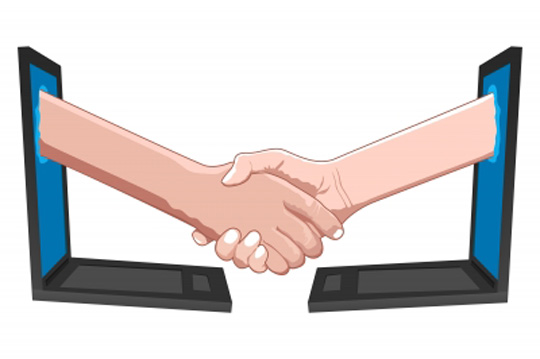It is fair to say that when freelancers get together we do a fair amount of complaining about bad clients that have made work life more difficult than needed. The few who failed to pay. The ones who were unclear on objectives, then blamed you.
In terms of understanding when you have a good client on your hands, here are some key traits to look out for.
Key Traits of Decent Clients

1. Clear communication. The problem with many prospective clients who later become actual clients is that they often don’t communicate what they want clearly enough.
The corporate liaison who doesn’t really understand web sites or freelance writing, but has been assigned the role to order writing for their site; everything you write is not quite what they were looking for and has to be redone.
Or the design client who agrees to the domain name, then changes their mind right at the point when the site is being demonstrated and the final payment will become due.
2. Pays a deposit. For freelancers who have worked independently for a few years, you’ll no doubt know by now that any new client who won’t pay a deposit is an issue.
Those clients who refuse to pay a deposit or kick up a big fuss about it will almost always be the same ones who fail to pay later. Usually they create noise later because they know they don’t have the money to pay anyway.
They’ll usually also find reasons to complain about a creative project, which is always somewhat subjective anyway, in order to create new issues and delay or dispute payment. It’s a type of smoke screen that you need to avoid. A lack of payment at the right level is a strong indicator of a problem.
3. Regular communication. This is different from clear communication. If you are working through a complicated design project or a writing assignment that needs approval of the first article before you can proceed further, then a significant delay in response time can cause delays.
Even with communication through emails, phone calls and other forms of contact this may cause an issue for completing projects in a timely manner so one can move on to the next client. It also delays receipt of expected revenue due to project delays.
Having a contactable client is important in order to ensure each step or phase of a project is going as planned. Without an accessible client, a project can lose focus and traction quickly.
4. Reasonable pricing. A good client appreciates the value of paying a freelancer a fair amount for the work. If a client looks to add more into a project that is outside the scope of the original agreement or adds to the difficulty of a written project without offering a raise in pay, then that will create issues down the road.
Give a client an inch, and some will try to take a mile. This is also the case with how much time an individual client needs with communication.
5. Time-efficient communication. As you can tell, communication is key, in both directions. If a client feels the need to discuss every point in detail, then that’s an issue. If to make a deal for three 500 word articles takes an hour of discussion and reassurance over Skype, then unless your price per word is high, you’re not being compensated for the negotiating time.
If this happens too often with the same client, you can clearly see that you should raise your rate to reflect their verbose communication style otherwise you’re not really earning what you think you are. This might not go down too well, so you may have to part ways if communication continues to be inefficient compared to the value of the order.
Developing Better Clients

Whilst many freelancers will grumble that they cannot seem to find decent clients, sometimes the reality is that they were too inexperienced or lacked the knowledge to see the problems before they appeared.
Often there are tell-tale signs that a problem is likely to occur in the future or is gradually developing now. The aforementioned new client that refuses to pay a deposit for a design project is clearly one such example. Even if they agree to pay 10%, I have personally found most often the rest of the bill went unpaid.
Here are a few suggestions on the kind of clients you should be looking for.
1. Speedy payments. If payments are made promptly, with little discussion and at an appropriate level, that is what you want to see.
For writing clients, if the client pays for the exact word count completed rather than the fixed word length ordered, on the basis that it’s only a few more cents to pay and they’ll use the full article anyway, then that is an excellent sign.
Design clients who are happy to pay the initial industry-standard deposit without any fuss about it bodes well for future payments.
Never let a client get too far ahead of the payments coming in. You don’t want to get too overextended versus financial receipts before you find out they’ve run out of money or refuse to pay.
Recently I had a client who paid on the first order, but was in the process of selling the web site. Because of this, he delayed payment until the auction had completed. Then the excuses started to flow thick and fast.
The original owner said it wasn’t his site any more, so not his problem. The new owner said it was his responsibility because he never ordered the content. Fortunately, I had frozen a 3rd order because the payment for the 2nd order hadn’t arrived, so I limited my losses.
2. Good character. If there are recommendations about the client on independent message boards, then excellent. By all means contact previous clients to confirm their feedback and check with the client whether that is acceptable to them. Decent clients will have no problem with this.
It is never worth it to work with people of questionable character. Even if they are currently behaving okay with you, a dispute will likely arise later (because these kinds of people always get into trouble) and then you’ll experience their ugly bad side for sure.
In the case of the site seller and buyer, I will never work with either of these clowns again no matter how much money they offer because they simply cannot be trusted.
3. No micro-managers. If a client wants to get into all the nitty gritty details, then this will be a sign that they will be a nightmare to work with. Nothing you do will be good enough for them. They will not accept that mistakes do happen and unexpected issues do arise. Their perfectionism or lack of trust in people they outsource work to will become, in short order, your problem to manage.
Discuss the details of a project with a client, agree deliverables, time-frames and expectations. Lay out what communication is needed and not needed to bring the project to a successful conclusion.
4. Set realistic expectations from the outset. Clients that start off with extremely unrealistic ideas about the time it takes to complete a web site development or the content writing for a new site launch will become issues real fast.
It is important to address these issues immediately that they arise. A client that expects impossible quality levels that would take far too long to achieve at the unrealistic price point that they want to pay or who expects faster deliver at a regular price are never going to work out.
If they cannot accept your terms, then it is best to part ways before going any further. New freelancers are the worst at this aspect. They need clients and income desperately and are inclined to accept lousy deals from questionable characters just to get money coming in the door.
Experience Counts
These same prospective clients would rarely get through the door of established freelancers as too many alarm bells would be ringing.
The problem with accepting work from questionable people is that often you won’t get paid when you don’t meet their unrealistically high expectations or perfectionist demands. You’ll simply lose your business time. This is time you could have spent locating better clients and completing work for someone with a decent character.
Build a check-list of warning signs and positives to stress at the initial discussion stage to ensure you avoid as many of these problems in the future. You can never avoid them all.

